Abstract
The reader will find in the following pages a new edition of Sulgi X, a text famous above all for its first part (ll. 1–73), describing the meeting of Innana and Sulgi. The goddess first speaks of her carnal union with the king and thereupon decrees a favourable fate for him. In the remainder of the hymn, Sulgi pays successive visits to Utu, Ninazu and Nanna. He then settles in the Egalmaḫ of Ninegala/Innana and ensures justice and prosperity.
Remerciements
Ma reconnaissance va d’abord à B. Jagersma, P. Michalowski et S. Tinney, qui ont eu l’obligeance de collationner respectivement les textes Ainc (LB 963), Einc (AUAM 73.3241) et BN-DN (UM 29-13-556 +, UM 29-16-265 et UM 29-16-81), à J. Peterson, qui a mis à ma disposition ses photos des textes BN–DN, et à J. Matuszak, qui a relu mon manuscrit avec beaucoup d’attention et m’a fait quelques observations très utiles. P. Michalowski m’a par ailleurs aimablement communiqué son manuscrit «Language, Gender, Sex, and Style in the Sumerian Language» (Michalowski, à paraître). Philip Jones, Associate Curator and Keeper de la Babylonian Section du Pennsylvania Museum, David Kertai, Curator Ancient Near East du Rijkmuseum van Oudheden et W.J.I. Waal, directeur van het Nederlands Instituut voor het Nabije Oosten ont fait en sorte que je puisse obtenir d’excellentes photos de LB 963 (Kertai et Waal) et de UM 29-13-556 +, UM 29-16-265 et UM 29-16-81 (Jones). Qu’ils soient assurés ici de ma gratitude. Je remercie enfin le Nederlands Instituut voor het Nabije Oosten, le Pennsylvania Museum et le Siegfried H. Horn Museum pour m’avoir accordé la permission de publier des photos respectivement de LB 963, de UM 29-13-556 +, UM 29-16-265 et UM 29-16-81, et de AUAM 73.3241.
Bibliographie
Abrahami, P. (2008): A propos d’une perle inédite: un élément de la parure-subi de Ninisina?, RA 102, 39–48.10.3917/assy.102.0039Suche in Google Scholar
Attinger, P. (1993): Eléments de linguistique sumérienne: la construction de du₁₁/e/di «dire» (OBOS), Fribourg – Göttingen.Suche in Google Scholar
Attinger, P. (1997): Compte rendu de Å.W. Sjöberg (ed.), The Sumerian Dictionary of the University Museum of the University of Pennsylvania, vol. 1: A. Part II, Philadelphie 1994, ZA 87, 112–122.Suche in Google Scholar
Attinger, P. (2014): Iddin-Dagan A. In: N. Koslova et al. (ed.), Studies in Sumerian Language and Literature. Festschrift für Joachim Krecher (BaBi. 8 = Orientalia et Classica 54), Winona Lake, 11–82.10.5325/j.ctv1bxh3kh.6Suche in Google Scholar
Attinger, P. (2018): Un gala coquet, NABU 2018/68.10.3917/rindu1.182.0068Suche in Google Scholar
Attinger, P. (2019): Sulgi X (2.4.2.24) <https://zenodo.org/record/2600006#.YUnS9y22060>.Suche in Google Scholar
Attinger, P. (2020): Enlil A., dans: I. Arkhipov et al. (ed.) The Third Millennium. Studies in Early Mesopotamia and Syria in Honor of Walter Sommerfeld and Manfred Krebernik (CunMon. 50), Leyde – Boston, 54–120.10.1163/9789004418080_004Suche in Google Scholar
Attinger, P. (2021a): Glossaire sumérien-français, principalement des textes littéraires paléobabyloniens, Wiesbaden.10.13173/9783447116169Suche in Google Scholar
Attinger (2021b): Addenda et corrigenda à P. Attinger, Glossaire sumérien-français, principalement des textes littéraires paléobabyloniens (2021), NABU 2021/59.10.13173/9783447116169Suche in Google Scholar
Attinger, P./M. Ceccarelli (2018): Addenda et corrigenda à P. Attinger, A propos de AK «faire», ZA 108, 143–148.10.1515/za-2018-0010Suche in Google Scholar
Black et al. (1998–2000): The Electronic Text Corpus of Sumerian Literature (ETCSL) 2.4.2.24: A Praise Poem of Šulgi (Šulgi X) <https://etcsl.orinst.ox.ac.uk/cgi-bin/etcsl.cgi?text=c.2.4.2.24&display=Crit&charenc=gcirc#> (translittération) et <https://etcsl.orinst.ox.ac.uk/cgi-bin/etcsl.cgi?text=t.2.4.2.24#> (traduction).Suche in Google Scholar
Bartash, V. (2017): Sumerian Administrative and Legal Documents ca. 2900 – 2200 BC in the Schøyen Collection (CUSAS 35), Bethesda.Suche in Google Scholar
Böck, B. (2004): Überlegungen zu einem Kultfest der altmesopotamischen Göttin Inanna, Numen 51, 20–46.10.1163/156852704773558214Suche in Google Scholar
Brisch, N. (2006): The Priestess and the King: The Divine Kingship of Šū-Sîn of Ur, JAOS 126, 161–176.Suche in Google Scholar
Brisch, N. (2010): Rebellions and Peripheries in Sumerian Royal Literature. In: S.F.C. Richardson (ed.), Rebellions and Peripheries in the Cuneiform World (AOS 91), Winona Lake, 29–45.Suche in Google Scholar
Carroué, F. (1993): Etudes de géographie et de topographie sumériennes III. L’Iturungal et le sud sumérien, ASJ 15, 11–69.Suche in Google Scholar
Civil, M. (2008): The Early Dynastic Practical Vocabulary A (Archaic HAR-ra A) (ARES 4), Rome.Suche in Google Scholar
Civil, M. (2011): XIII. The Law Collection of Ur-Namma. In: A.R. George (ed.), Cuneiform Royal Inscriptions and Related Texts in the Schøyen Collection (CUSAS 17), Bethesda, 221–286.Suche in Google Scholar
Cooper, J.S. (1972–1975): Heilige Hochzeit. B. Archäologisch, RlA 4, 259–269.Suche in Google Scholar
Cooper, J.S. (1993): Sacred Marriage and Popular Cult in Early Mesopotamia. In: E. Matsushima (ed.), Official Cult and Popular Religion in the Ancient Near East. Papers of the First Colloquium on the Ancient Near East — The City and its Life Held at the Middle Eastern Culture Center in Japan (Mitaka, Tokyo), Heidelberg, 81–96.Suche in Google Scholar
Cooper, J.S. (2013): Sex and the Temple. In: K. Kaniuth et al. (ed.), Tempel im Alten Orient. 7. Colloquium der Deutschen Orient-Gesellschaft, 11.–13. Oktober 2009, München (CDOG 7), Wiesbaden, 49–57.Suche in Google Scholar
Couto Ferreira, E. (2009): Etnoanatomía y partonomía del cuerpo humano en sumerio y en acadio. El léxico Ugu-mu, Ph.D. diss., Universtitat Pompeu Fabra.Suche in Google Scholar
Edzard, D.O. (1976–1980): IM, RlA 5, 63–65.10.1215/1636545-1976-11-63Suche in Google Scholar
Edzard, D.O. (1997): Gudea and his Dynasty (RIME 3/1), Toronto.10.3138/9781442675551Suche in Google Scholar
Frayne, D.R. (1983): Compte rendu de J. Klein, Three Šulgi Hymns: Sumerian Royal Hymns Glorifying King Šulgi of Ur. Bar-Ilan Studies in Near Eastern Languages and Culture, Ramat Gan, 1981, BiOr. 40, 92–101.Suche in Google Scholar
Frayne, D.R. (1985): Notes on the Sacred Marriage Rite («review article» de S.N. Kramer, Le mariage sacré à Sumer et à Babylone, traduit de l’anglais et adapté par J. Bottéro, Paris, 1983), BiOr. 42, 5–22.Suche in Google Scholar
Frayne, D.R. (1997): Ur III Period (2112 – 2004 BC) (RIME 3/2), Toronto.10.3138/9781442657069Suche in Google Scholar
Fritz, M.M. (2003): «... und weinten um Tammuz»: Die Götter Dumuzi-Ama’ušumgal’anna und Damu (AOAT 307), Münster.Suche in Google Scholar
Galter, H.D. (2021): Veil and Headscarf: Five Aspects of a Cultural Phenomenon. In: R. Del Fabbro et al. (ed.), Headscarf and Veiling: Glimpses from Sumer to Islam (Antichistica 30 = Studi orientali 12), Venise, 20–72.10.30687/978-88-6969-521-6/004Suche in Google Scholar
Geller, M.J. (2002): The Free Library Inanna Prism Reconsidered. In: T. Abusch (ed.), Riches Hidden in Secret Places: Ancient Near Eastern Studies in Memory of Thorkild Jacobsen, Winona Lake, 87–100.10.5325/j.ctv1bxh4wn.12Suche in Google Scholar
George, A.R. (2009): Babylonian Literary Texts in the Schøyen Collection (CUSAS 10), Bethesda.Suche in Google Scholar
George, A.R. (2016): Mesopotamian Incantations and Related Texts in the Schøyen Collection (CUSAS 32), Bethesda.Suche in Google Scholar
Hall, M.G. (1985): A Study of the Sumerian Moon-God, Nanna/Suen. Ph.D. diss., University of Pennsylvania.Suche in Google Scholar
Heimpel, W. (1993): Zu den Bezeichnungen von Schafen und Ziegen in den Drehem- und Ummatexten. In: J.N. Postgate/M. Powell (ed.), Domestic Animals of Mesopotamia. Part 1 (BSA 7), Cambridge, 115–160.Suche in Google Scholar
Horowitz, W. (1998, 22011): Mesopotamian Cosmic Geography (MesCiv. 8), Winona Lake.Suche in Google Scholar
Huber Vulliet, F. (2019): Le personnel cultuel à l’époque néo-sumérienne (ca. 2160–2003 av. J.-C.) (BPOA 14), Madrid.Suche in Google Scholar
Jaques, M. (2006): Le vocabulaire des sentiments dans les textes sumériens: recherche sur le lexique sumérien et akkadien (AOAT 332), Münster.Suche in Google Scholar
Jones, P. (2003): Embracing Inana: Legitimation and Mediation in the Ancient Mesopotamian Sacred Marriage Hymn Iddin-Dagan A, JAOS 123, 291–302.10.2307/3217685Suche in Google Scholar
Karahashi, F. (2000): Sumerian Compound Verbs with Body-Part Terms, Ph.D. diss., University of Chicago.Suche in Google Scholar
Katz, D. (1993): The Image of the Netherworld in the Sumerian Sources, Bethesda.Suche in Google Scholar
Klein, J. (1981): Three Šulgi Hymns: Sumerian Royal Hymns Glorifying King Šulgi of Ur (Bar-Ilan Studies in Near Eastern Languages and Culture), Ramat Gan.Suche in Google Scholar
Kramer, S.N. (1967): Shulgi of Ur: A Royal Hymn and a Divine Blessing, The Seventy-Fifth Anniversary Volume of the Jewish Quartely Review, JQR 57, 369–380.10.2307/1453503Suche in Google Scholar
Kramer, S.N. (1969): The Sacred Marriage Rite: Aspects of Faith, Myth and Ritual in Ancient Sumer, Bloomington-Londres.Suche in Google Scholar
Kramer, S.N. (1983): Le mariage sacré à Sumer et Babylone, traduit de l’anglais et adapté par Jean Bottéro, Paris.Suche in Google Scholar
Kramer, S.N./Molina, M. (1999): El Matrimonio Sagrado en la Antigua Súmer. Traducción y adaptación de Manuel Molina, Sabadell.Suche in Google Scholar
Kraus, F.R. (1953–1955): Zu Moortgat, «Tammuz», WZKM 52, 36–80.10.1177/104438945503600110Suche in Google Scholar
Krebernik, M./J.J.W. Lisman (2020): The Sumerian Zame Hymns from Tell Abū Ṣalābīḫ. With an Appendix on the Early Dynastic Colophons (dubsar 12), Münster.10.2307/jj.18654692Suche in Google Scholar
Lämmerhirt, K. (2010): Wahrheit und Trug: Untersuchungen zur altorientalischen Begriffsgeschichte (AOAT 348), Münster.Suche in Google Scholar
Lapinkivi, P. (2004): The Sumerian Sacred Marriage in the Light of Comparative Evidence (SAAS 15), Helsinki.Suche in Google Scholar
Leick, G. (1994): Sex and Eroticism in Mesopotamian Literature, Londres.Suche in Google Scholar
Löhnert, A. (2009): «Wie die Sonne tritt heraus!». Eine Klage zum Auszug Enlils mit einer Untersuchung zu Komposition und Tradition sumerischer Klagelieder in altbabylonischer Zeit (AOAT 365).Suche in Google Scholar
Marchesi, G. (2010): LUMMA in the Onomasticon and Literature of Ancient Mesopotamia (HANES 10), Padoue.Suche in Google Scholar
Marchesi, G./N. Marchetti. (2011): Royal Statuary of Early Dynastic Mesopotamia (MesCiv. 14), Winona Lake.10.1515/9781575066516Suche in Google Scholar
Metcalf, C. (2019): Sumerian Literary Texts in the Schøyen Collection. Volume 1: Literary Sources on Old Babylonian Religion (CUSAS 38), Bethesda.10.1515/9781646020119Suche in Google Scholar
Michalowski, P. (à paraître): Language, Gender, Sex, and Style in the Sumerian Language. In: N. Brisch/F. Karahashi (ed.), Women in Religion in the Ancient Near East and Asia: Businesswomen, Empresses, Priestesses, and Goddesses (à paraître dans SANER).Suche in Google Scholar
Mittermayer, C. (2006, unter Mitarbeit von P. Attinger): Altbabylonische Zeichenliste der sumerisch-literarischen Texte (OBOS), Fribourg – Göttingen.Suche in Google Scholar
Ouyang, X./W.R. Brookman (2012): The Cuneiform Collection of the Peabody Essex Museum in Salem, Massachusetts, CDLJ 2012:1.Suche in Google Scholar
Paoletti, A. (2012): Der König und sein Kreis: Das staatliche Schatzarchiv der III. Dynastie von Ur (BPOA 10), Madrid.Suche in Google Scholar
Peterson, J. (2007): A Study of Sumerian Faunal Conception with a Focus on the Terms Pertaining to the Order Testudines, Ph.D. diss., University of Pennsylvania.Suche in Google Scholar
Peterson, J. (2011): Sumerian Literary Fragments in the University Musem, Philadelphia (BPOA 9), Madrid.Suche in Google Scholar
Peterson, J. (2020): A Poetic Description of Surgery and Disease Snatching Dogs? A Collective of Sumerian Hymns to Healing Deities from Old Babylonian Nippur, OrAnt. SN 2, 143–150. Suche in Google Scholar
Pfitzner, J. (2019): The Use of ellum, ebbum, and namrum in the Sign List Diri, Kaskal 16, 237–257.Suche in Google Scholar
Piras, A. (2004): Mesopotamian Sacred Marriage and Pre-Islamic Iran. In: A. Panaino/A. Piras (ed.) Schools of Oriental Studies and the Development of Modern Historiography (Melammu Symposia 4), Milan, 249–259.Suche in Google Scholar
Polonsky, J. (2002): The Rise of the Sun God and the Determination of the Destiny in Ancient Mesopotamia, Ph.D. diss., University of Pennsylvania.Suche in Google Scholar
Pongratz-Leisten, B. (2008): Sacred Marriage and the Transfer of Divine Knowledge: Alliances between the Gods and the King in Ancient Mesopotamia. In: M. Nissinen/R. Uro (ed.), The Divine-Human Sexual Metaphor from Sumer to Early Christianity, Winona Lake, 43–73.10.5325/j.ctv1bxgzv8.5Suche in Google Scholar
Rodin, T. (2014): The World of the Sumerian Mother Goddess: An Interpretation of her Myths (Acta Universitatis Upsaliensis. Historia religionum 35), Uppsala.Suche in Google Scholar
Rubio, G. (2001): Inanna and Dumuzi: A Sumerian Love Story («review article» de Y. Sefati, Love Songs in Sumerian Literature: Critical Edition of the Dumuzi-Inanna Songs [Bar-Ilan Studies in Near Eastern Languages and Culture], Ramat Gan, 1998), JAOS 121, 268–274.10.2307/606565Suche in Google Scholar
Rubio, G. (2010): Reading Sumerian Names. I: Ensuhkešdanna and Baba, JCS 62, 29–43.10.1086/JCS41103869Suche in Google Scholar
Rudik, N. (2015): Die Entwicklung der keilschriftlichen sumerischen Beschwörungsliteratur von den Anfängen bis zur Ur III-Zeit, Diss. Friedrich-Schiller-Universität Jena <http://nbn-resolving.de/urn:nbn:de:gbv:27-20150717-134812-0>.Suche in Google Scholar
Rudik, N. (2018): «Dieser Ziegel ist wie Lapislazuli...»: Ein bisher übersehenes Bauritual im Kontext der frühen sumerischen Beschwörungen. In: P. Attinger et al. (ed.), Text and Image. Proceedings of the 61e Rencontre Assyriologique Internationale, Geneva and Bern, 22–26 June 2015 (OBO SA 40), Louvain – Paris – Bristol, 399–409.10.2307/j.ctv1q26x24.40Suche in Google Scholar
Sallaberger, W. (1999): Ur III-Zeit. In: P. Attinger/M. Wäfler (ed.), Mesopotamien: Akkade-Zeit und Ur III-Zeit (Annährungen 3 = OBO 160/3), Fribourg – Göttingen, 121–390.Suche in Google Scholar
Schrakamp, I. (2015): 6. Geographical Horizons of the Presargonic and Sargonic Archives. In: W. Sallaberger/I. Schrakamp (ed.), Associated Regional Chronologies for the Ancient Near East. Vol. 3: History & Philology (ARCANE 3), Turnhout, 197–270.Suche in Google Scholar
Schuster-Brandis, A. (2008): Steine als Schutz- und Heilmittel: Untersuchung zu ihrer Verwendung in der Beschwörungskunst Mesopotamiens im 1. Jt. v. Chr. (AOAT 46), Münster.Suche in Google Scholar
Schwemer, D. (2001): Die Wettergottgestalten Mesopotamiens und Nordsyriens im Zeitalter der Keilschriftkulturen: Materialien und Studien nach den schriftlichen Quellen, Wiesbaden.Suche in Google Scholar
Sefati, Y. (1998): Love Songs in Sumerian Literature: Critical Edition of the Dumuzi-Inanna Songs (Bar-Ilan Studies in Near Eastern Languages and Culture), Ramat Gan.Suche in Google Scholar
Selz, G.J. (2012): Götter der Gesellschaft — Gesellschaft der Götter: Zur Dialektik von Abbildung und Ordnung. In: H. Neumann (ed.), Wissenskultur im Alten Orient: Weltanschauung, Wissenschaften, Techniken, Technologien. 4. Internationales Colloquium der Deutschen Orient-Gesellschaft 20.–22. Februar 2002, Münster (CDOG 4), Wiesbaden 61–85.Suche in Google Scholar
Sjöberg, Å.W. (1988): A Hymn to Inanna and her Self-Praise, JCS 40, 165–186.10.2307/1359660Suche in Google Scholar
Snell, D.C. (1982): Ledgers and Prices: Early Mesopotamian Merchant Accounts (YNES 8), New Haven.Suche in Google Scholar
Sommerfeld, W. et al. (2005): Altakkadische Texte der St. Petersburger Eremitage. In: L. Kogan et al. (ed.), Memoriae Igor Diakonoff (BaBi. 2 = Orientalia et Classica 8), Winona Lake, 185–231.Suche in Google Scholar
Steinkeller, P. (1995a): Sheep and Goat Terminology in Ur III Sources from Drehem. In: J.N. Postgate/M. A. Powell (ed.), Domestic Animals of Mesopotamia. Part 2 (BSA 8), Cambridge, 49–70.Suche in Google Scholar
Steinkeller, P. (1995b): Compte rendu de J. Marzahn, Altsumerische Verwaltungstexte aus Girsu/Lagaš (VS NF 9), Berlin, 1991, JAOS 115, 540–543.10.2307/606270Suche in Google Scholar
Steinkeller, P. (1999): On Rulers, Priests and Sacred Marriage: Tracing the Evolution of Early Sumerian Kingship. In: K. Watanabe (ed.), Priests and Officials in the Ancient Near East. Papers of the Second Colloquium on the Ancient Near East – The City and its Life, Held at the Middle Eastern Culture Center in Japan (Mitaka, Tokyo), March 22–24, Heidelberg, 1996, 103–137.Suche in Google Scholar
Stol, M. (2016): Women in the Ancient Near East, Boston – Berlin.10.1515/9781614512639Suche in Google Scholar
Teppo, S. (2008): Sacred Marriage and the Devotees of Ištar. In: M. Nissinen/R. Uro (ed.), The Divine-Human Sexual Metaphor from Sumer to Early Christianity, Winona Lake, 75–92.10.5325/j.ctv1bxgzv8.6Suche in Google Scholar
Tinney, S. (1996): The Nippur Lament: Royal Rhetoric and Divine Legitimation in the Reign of Išme-Dagan of Isin (1953–1935 B.C.) (OccPubl. S.N. Kramer Fund 16), Philadelphie.Suche in Google Scholar
Vacín, L. (2011a): Šulgi of Ur: Life, Deeds, Ideology and Legacy of a Mesopotamian Ruler as Reflected Primarily in Literary Texts, Ph.D. diss., University of London.Suche in Google Scholar
Vacín, L. (2011b): New Duplicate of Hymn Šulgi A in the Schøyen Collection, WZKM 101, 433–466.Suche in Google Scholar
van Dijk, J. (1954): La fête du nouvel an dans un texte de Šulgi, BiOr. 11, 83–88.Suche in Google Scholar
van Dijk, J.J.A./M.J. Geller (2003): Ur III Incantations from the Frau Professor Hilprecht-Collection, Jena (TMH 6), Wiesbaden.Suche in Google Scholar
Veldhuis, N. (2000): Sumerian Proverbs in their Curricular Context («review article» de B. Alster, Proverbs of Ancient Sumer: The World’s Earliest Proverb Collections, Bethesda, 1997), JAOS 120, 383–399.10.2307/606010Suche in Google Scholar
Westenholz, J.G. (1995): Heilige Hochzeit und kultische Prostitution im Alten Mesopotamien, Wort und Dienst, Jahrbuch der Kirchlichen Hochschule Betehl NF 23, 43–62.Suche in Google Scholar
Westenholz, J.G. (2000): King by Love of Inanna – an Image of Female Empowerment?, NIN 1, 75–89.Suche in Google Scholar
Wiggermann, F.A.M. (1998–2001): Nin-azu, RlA 9, 329–335.10.1080/10673220127907Suche in Google Scholar
Wilcke, C. (1972): Der aktuelle Bezug der Sammlung der sumerischen Tempelhymnen und ein Fragment eines Klageliedes, ZA 62, 35–61.10.1515/zava.1972.62.1.35Suche in Google Scholar
Wilcke, C. (1974): Zum Königtum in der Ur III-Zeit. In: P. Garelli (ed.), Le palais et la royauté. XIXe Rencontre Assyriologique Internationale organisée par le groupe François Thureau-Dangin, Paris, 29 juin–2 juillet 1971 (CRRAI 19), Paris, 177–232.Suche in Google Scholar
Wilcke, C. (1990): Orthographie, Grammatik und literarische Form: Beobachtungen zu der Vaseninschrift Lugalzaggesis (SAKI 152–156). In: T. Abusch et al. (ed.), Lingering over Words: Studies in Ancient Near Eastern Literature in Honor of William L. Moran (HSS 37), Atlanta, 455–504.10.1163/9789004369559_031Suche in Google Scholar
Wilcke, C. (2010): Sumerian: What We Know and What We Want to Know. In: L. Kogan et al. (ed.), Language in the Ancient Near East. Proceedings of the 53e Rencontre Assyriologique Internationale. Vol. 1, Part 1 (BaBi. 4/1 = Orientalia et Classica 30), Winona Lake, 5–76.10.1515/9781575066394-003Suche in Google Scholar
Zgoll, A. (2006): Compte rendu de Y. Sefati, Love Songs in Sumerian Literature: Critical Edition of the Dumuzi-Inanna Songs (Bar-Ilan Studies in Near Eastern Languages and Culture), Ramat Gan, 1998, ZA 96, 109–119.Suche in Google Scholar
Légendes des photos
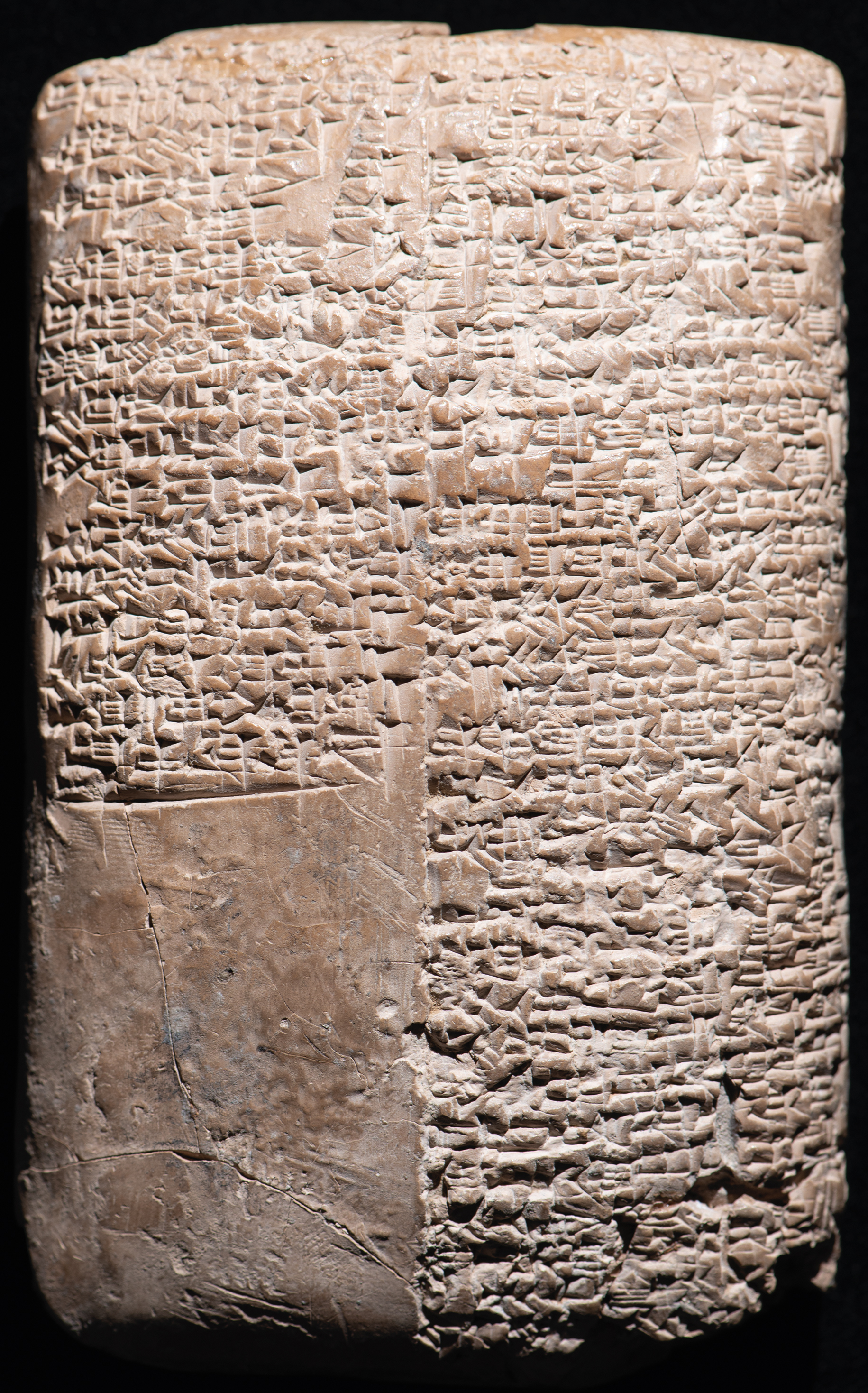
LB 963 (A) rev.; courtoisie du Nederlands Instituut voor het Nabije Oosten.

LB 963 (A) tranche; courtoisie du Nederlands Instituut voor het Nabije Oosten.
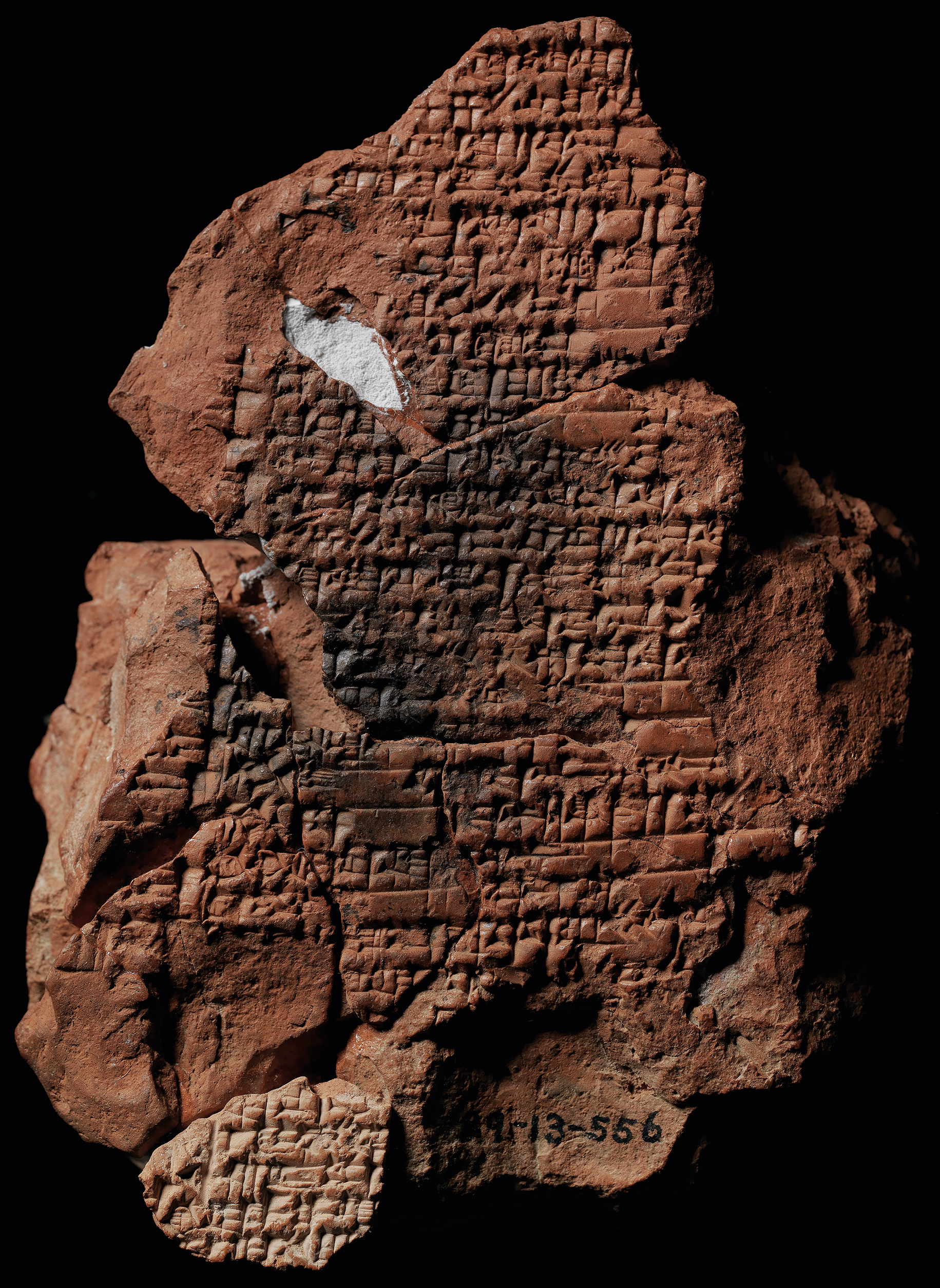
UM 29-13-556+ (B) f.; courtoisie du Pennsylvania Museum.
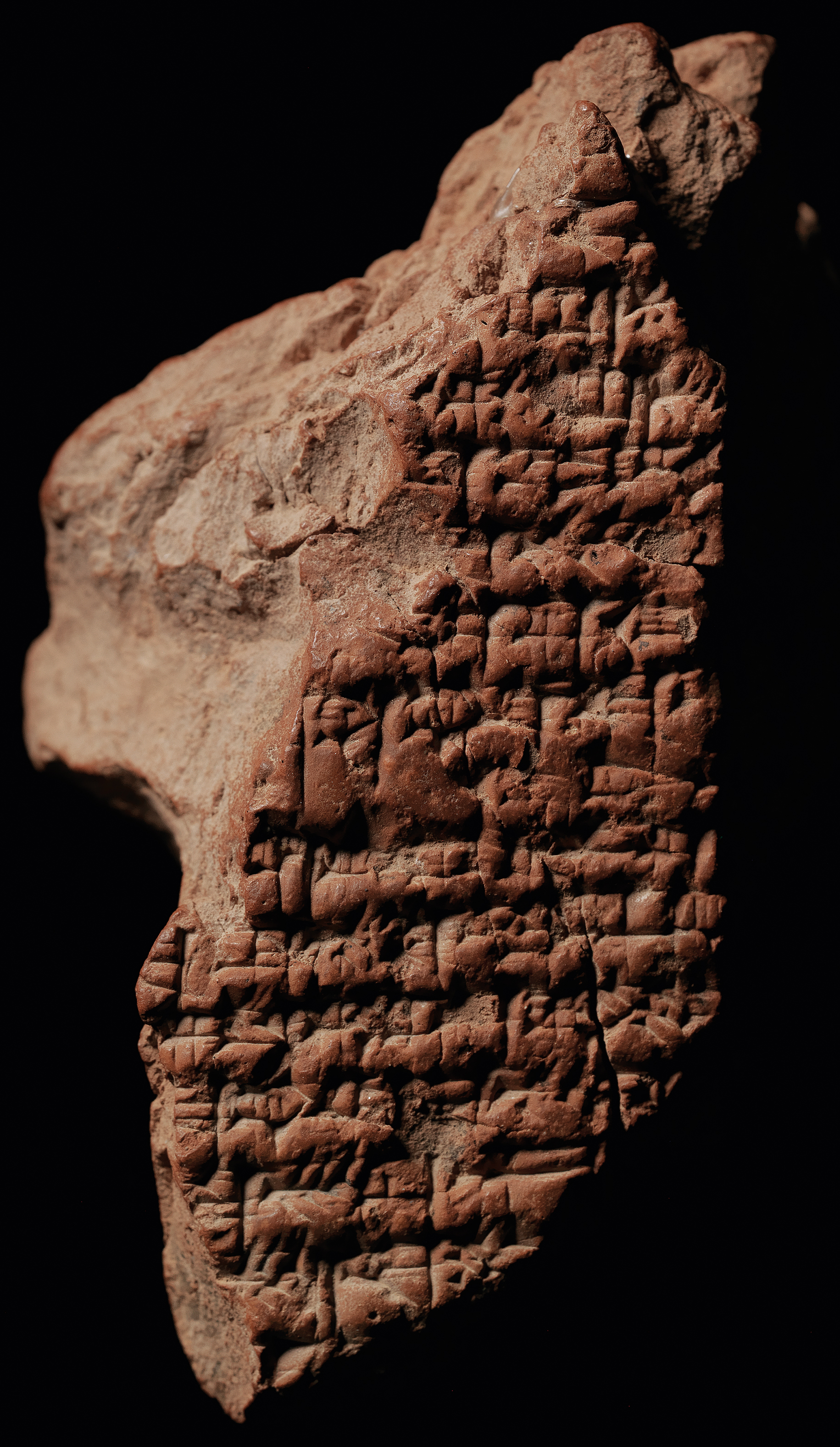
N 4264 (B) f.; courtoisie du Pennsylvania Museum.
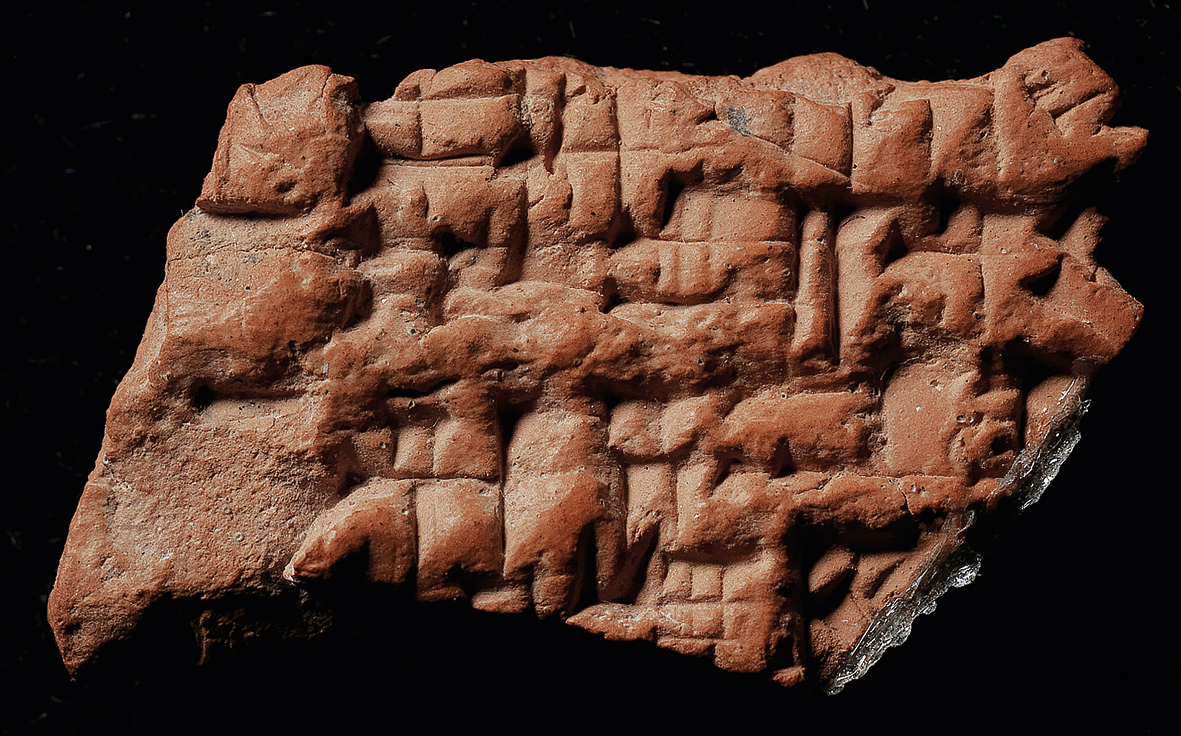
N 7012. (B) f.; courtoisie du Pennsylvania Museum.
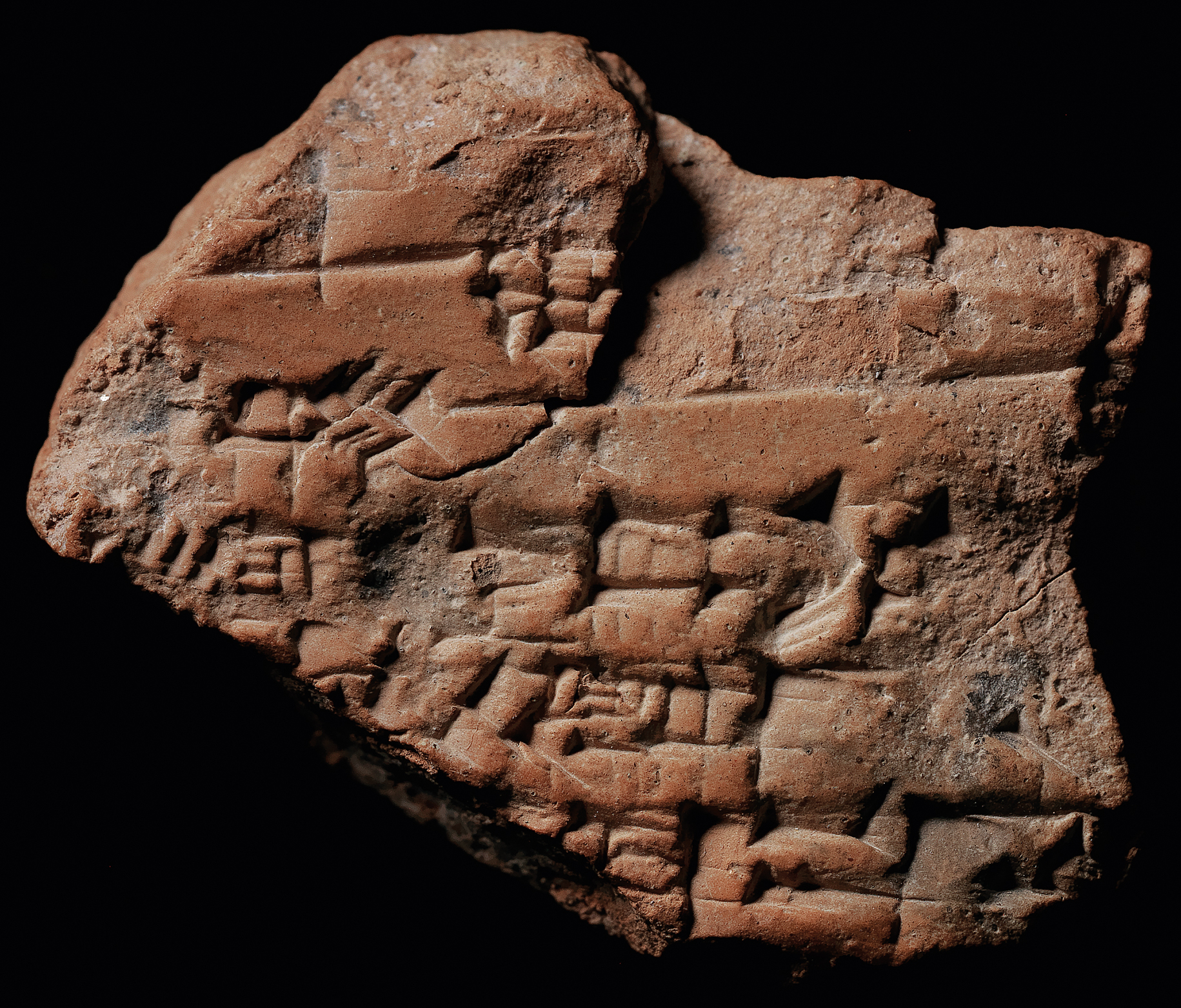
N 7027 (B) f.; courtoisie du Pennsylvania Museum.
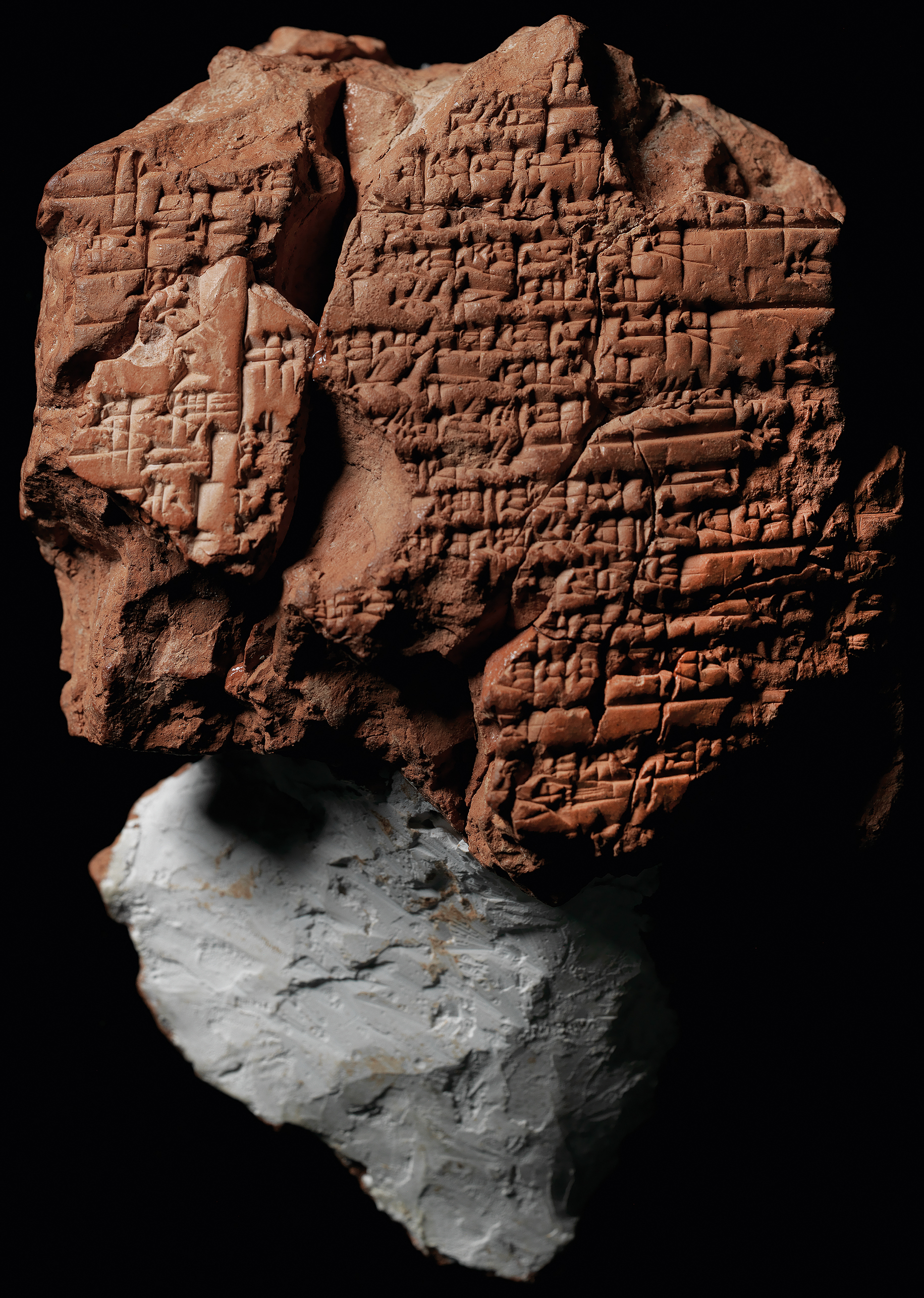
UM 29-13-556+ (B) rev.; courtoisie du Pennsylvania Museum.
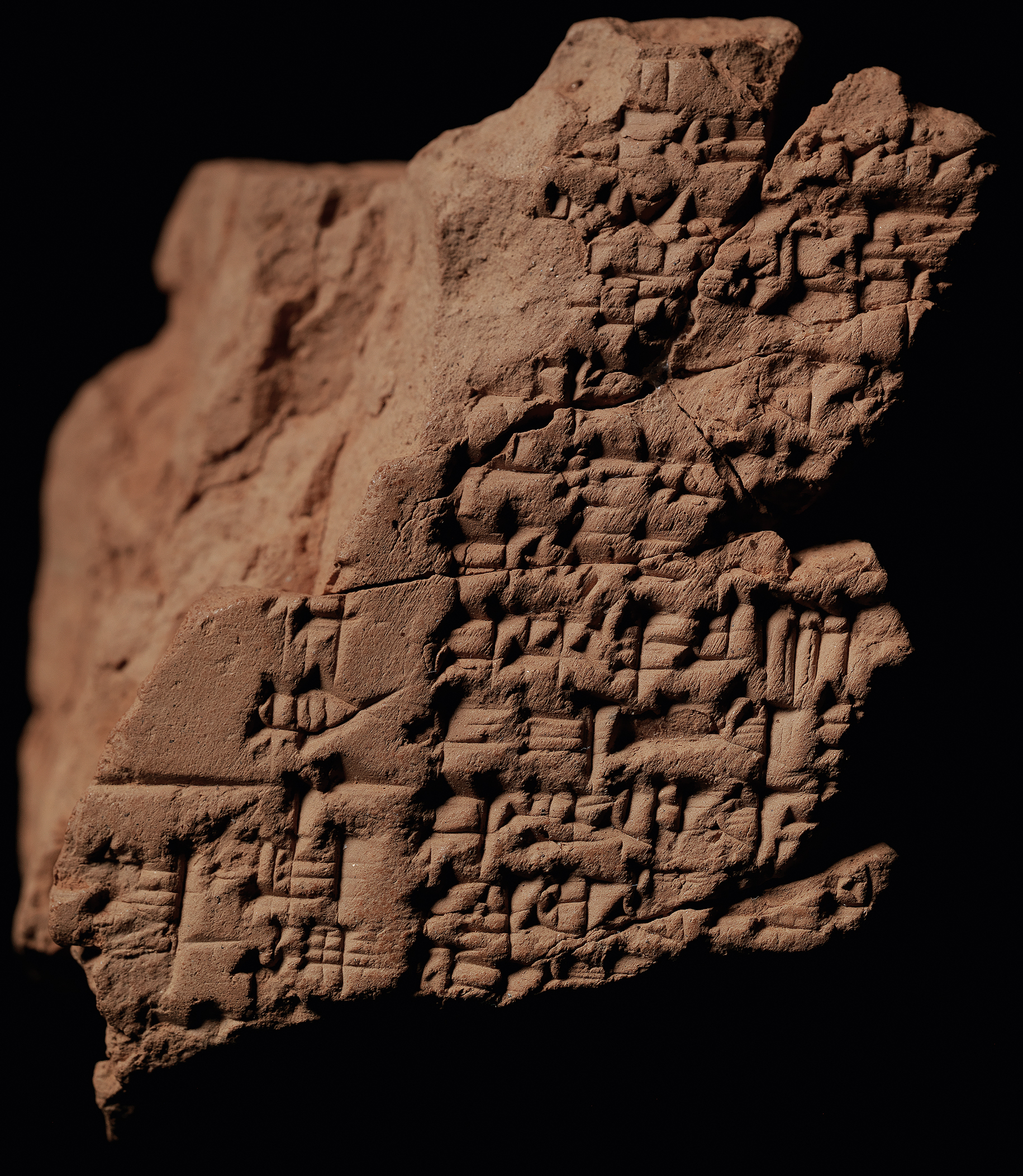
N 4258 (B) rev.; courtoisie du Pennsylvania Museum.
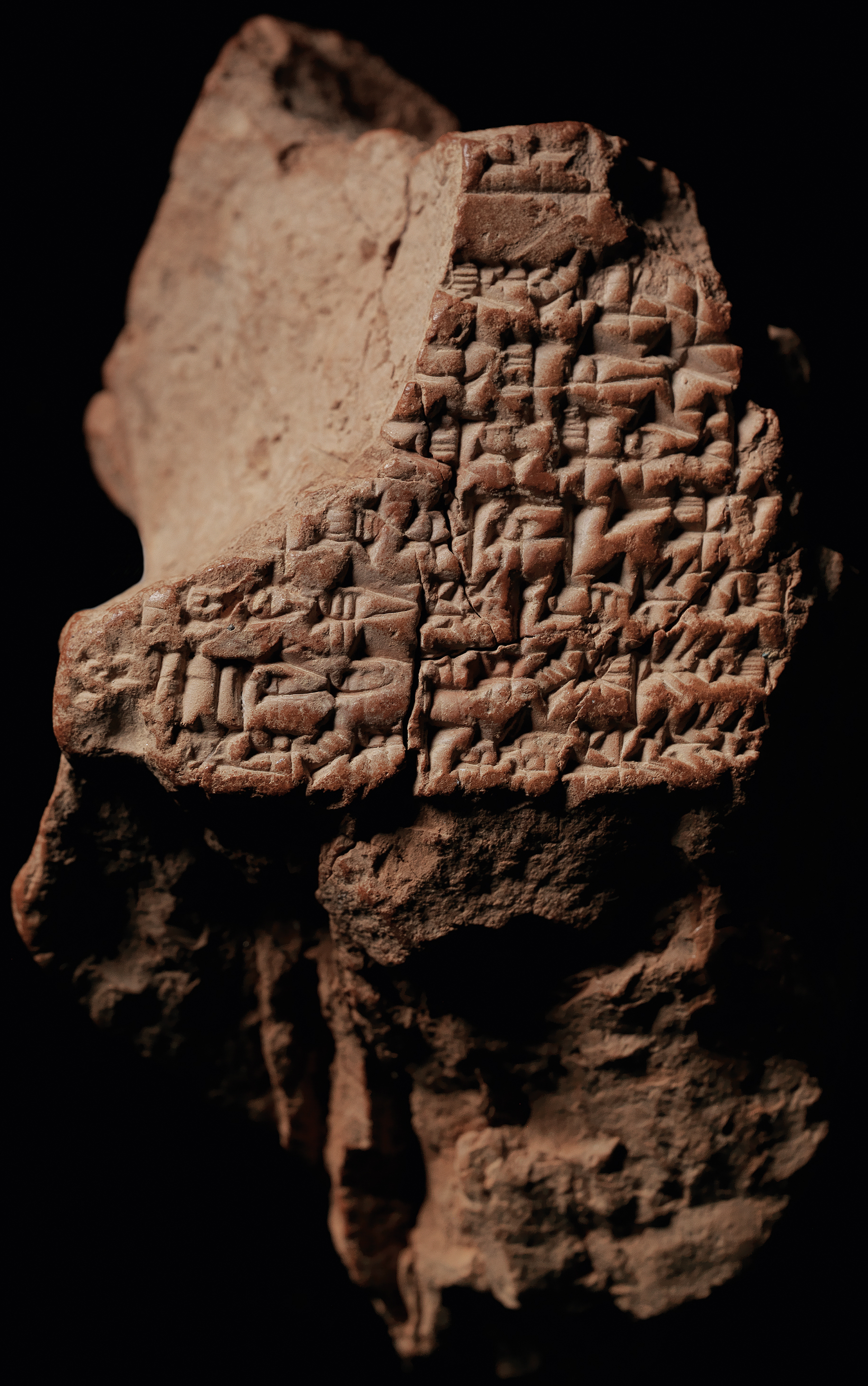
N 4264 (B) rev.; courtoisie du Pennsylvania Museum.
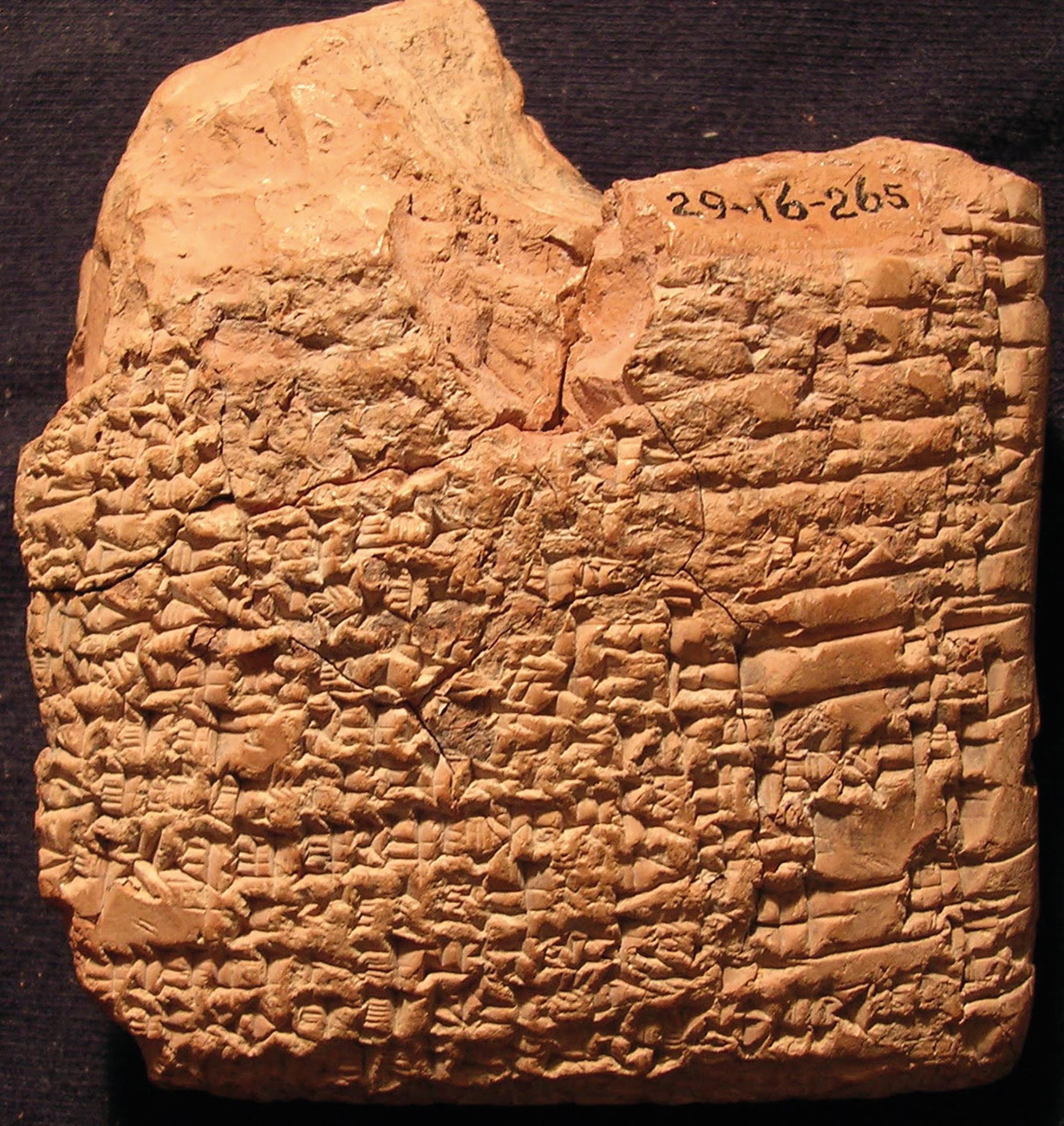
UM 29-16-265 (C) rev.; courtoisie du Pennsylvania Museum, photo de J. Peterson.
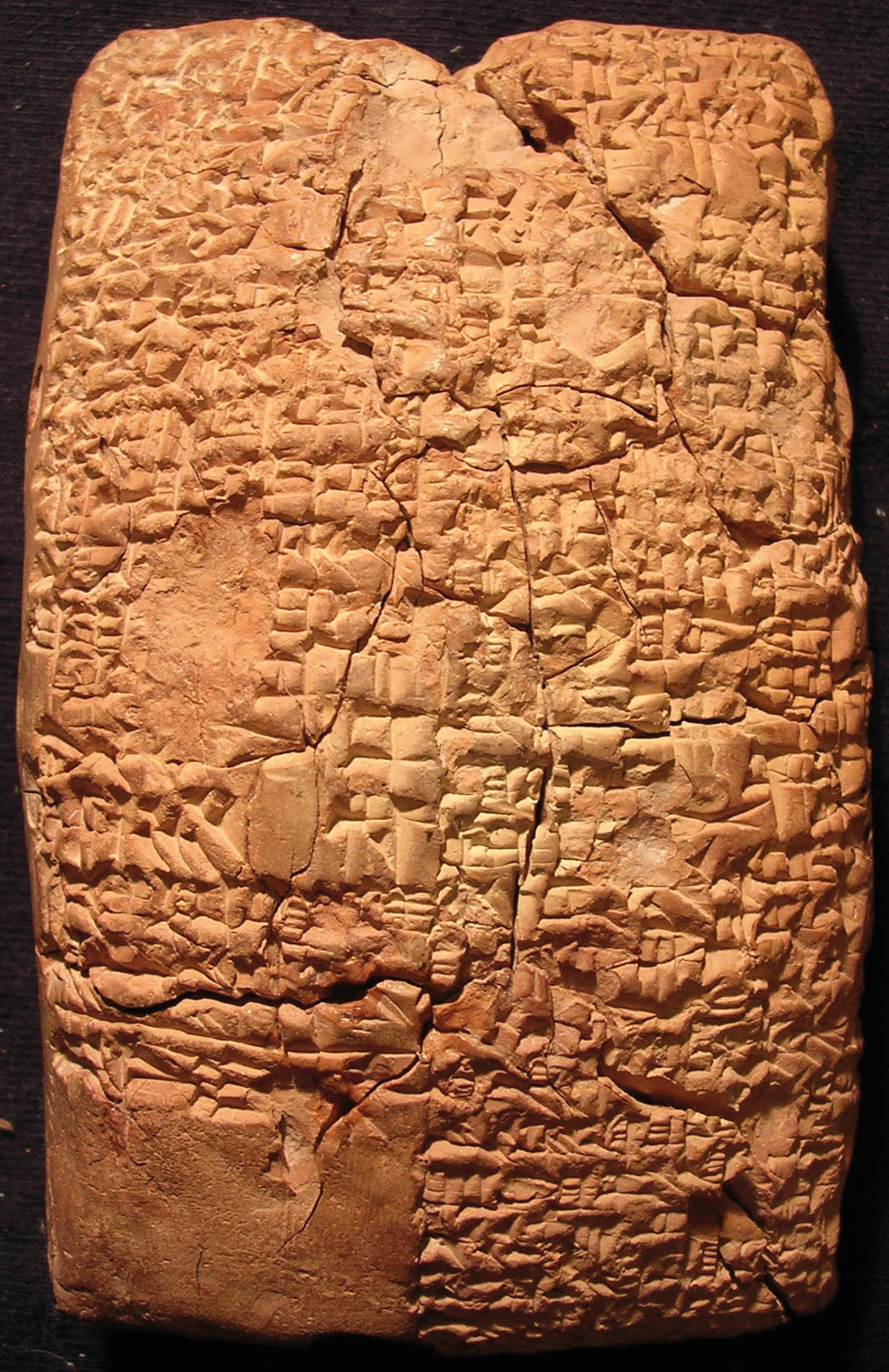
UM 29-16-81 (D) rev.; courtoisie du Pennsylvania Museum, photo de J. Peterson.
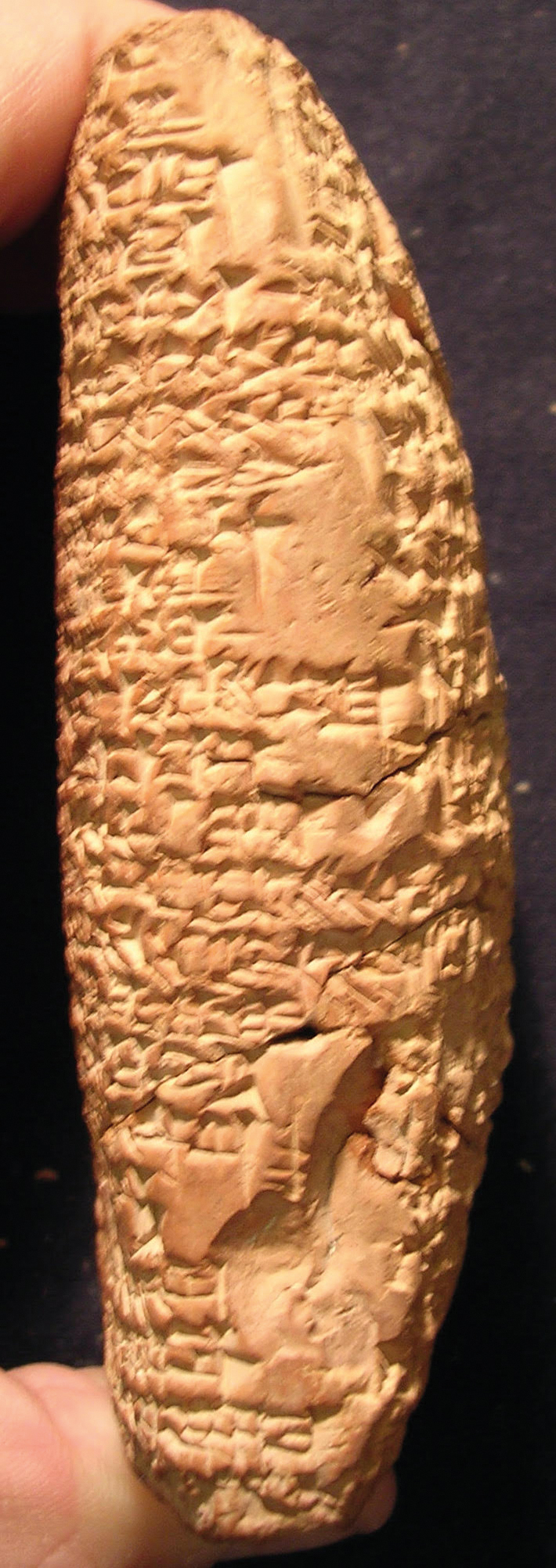
UM 29-16-81 (D) tr.; courtoisie du Pennsylvania Museum, photo de J. Peterson.
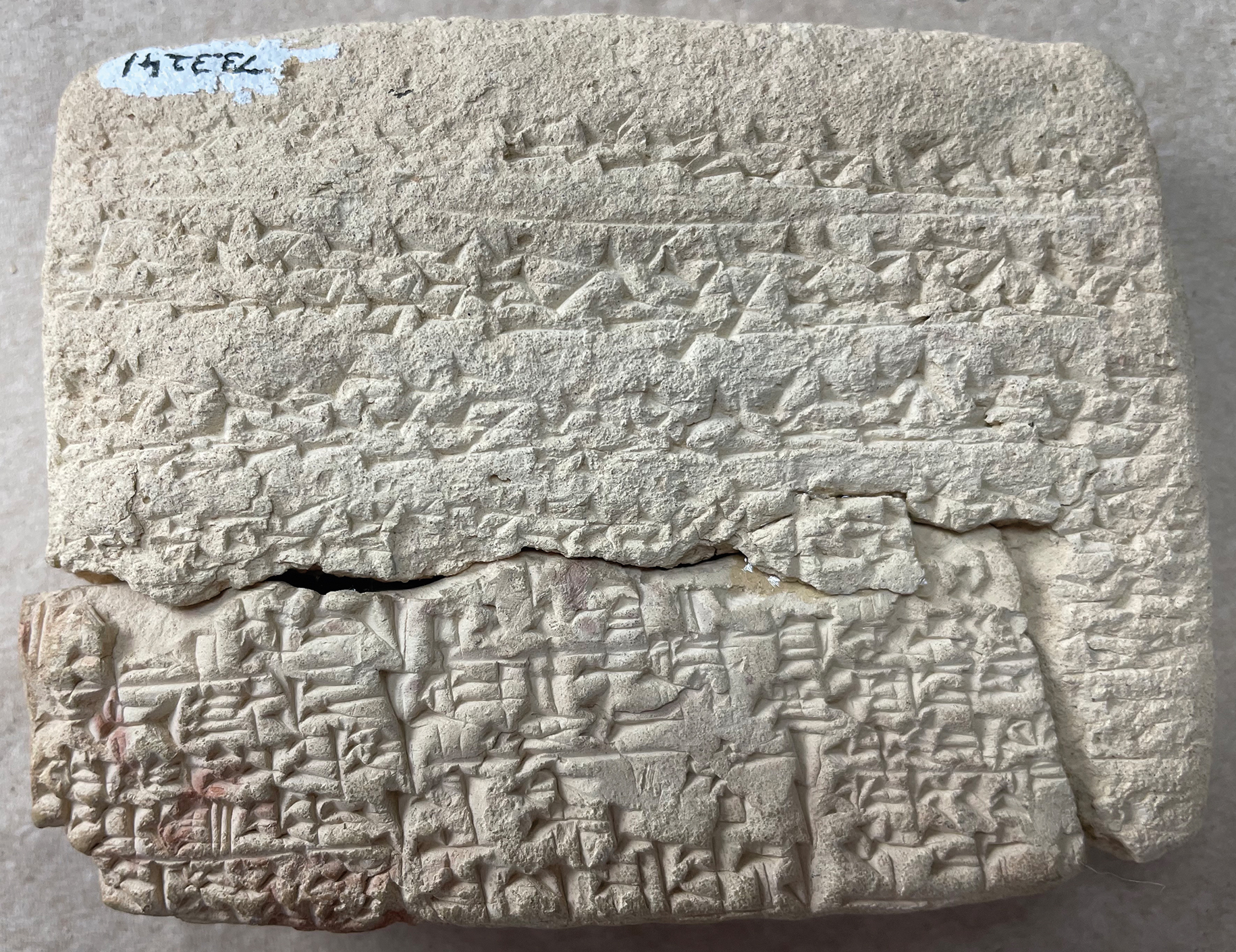
AUAM 73.3241 (E) f.; courtoisie du Siegfried H. Horn Museum, photo de P. Michalowski.
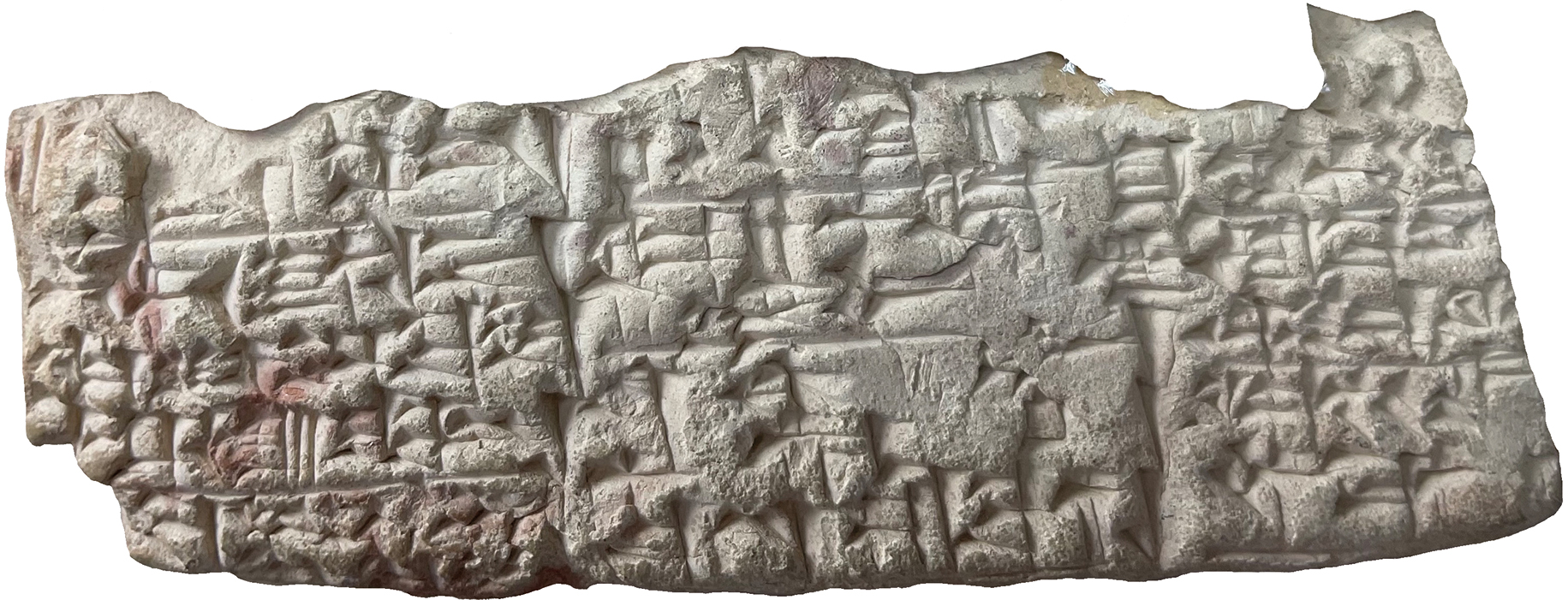
AUAM 73.3241 (E) f.; courtoisie du Siegfried H. Horn Museum, photo de P. Michalowski.
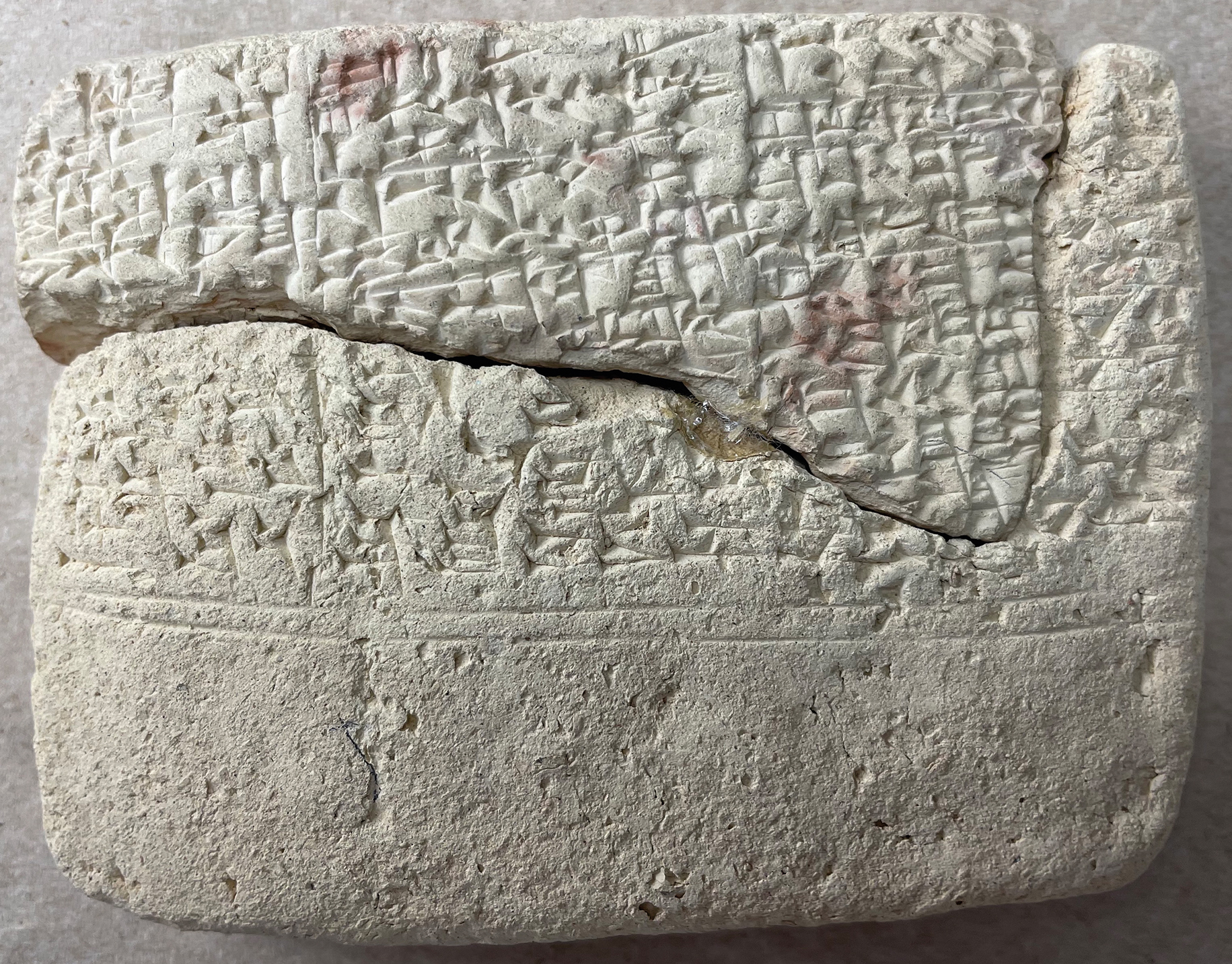
AUAM 73.3241 (E) rev.; courtoisie du Siegfried H. Horn Museum, photo de P. Michalowski.
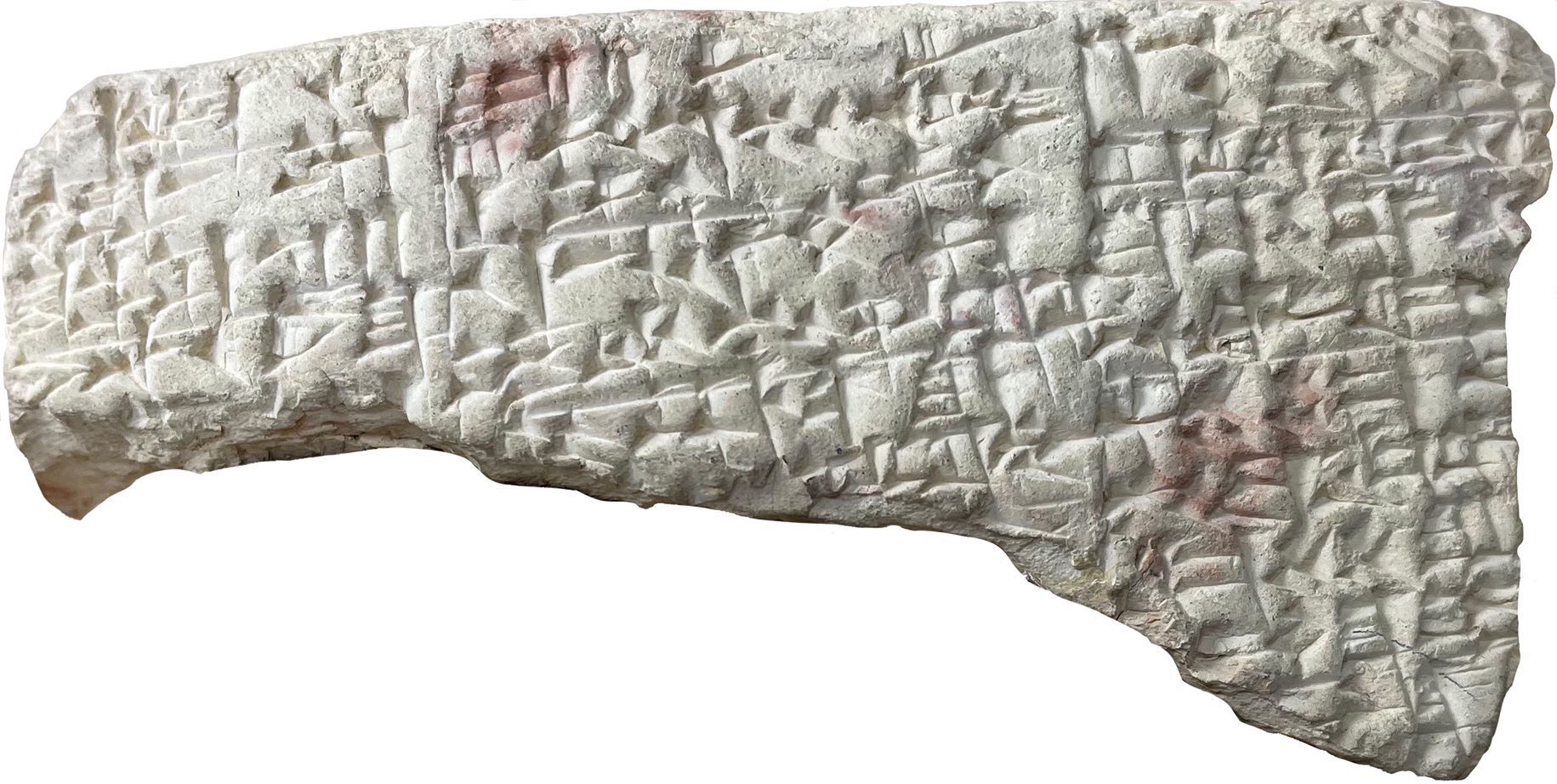
AUAM 73.3241 (E) rev.; courtoisie du Siegfried H. Horn Museum, photo de P. Michalowski.
© 2022 Walter de Gruyter GmbH, Berlin/Boston
Artikel in diesem Heft
- Frontmatter
- Frontmatter
- The Ebla Chancery Texts in the Light of Recent Linguistic Research
- Sulgi X
- Corruption in the Hittite Administration
- The tug₂guz-za/tug₂guz.za at Ḫattuša and Beyond
- A Reassessment of the Middle Bronze Age Cultures in the Lake Orūmīyeh Basin, Iran
- Das Zylinder-Fragment Nr. 1+6, Gudeas Zylinder X und Ninĝirsus Heldentaten im Gebirge
Artikel in diesem Heft
- Frontmatter
- Frontmatter
- The Ebla Chancery Texts in the Light of Recent Linguistic Research
- Sulgi X
- Corruption in the Hittite Administration
- The tug₂guz-za/tug₂guz.za at Ḫattuša and Beyond
- A Reassessment of the Middle Bronze Age Cultures in the Lake Orūmīyeh Basin, Iran
- Das Zylinder-Fragment Nr. 1+6, Gudeas Zylinder X und Ninĝirsus Heldentaten im Gebirge

